Targeted mutation of mouse skeletal muscle sodium channel produces myotonia and potassium-sensitive weakness
- PMID: 18317596
- PMCID: PMC2260907
- DOI: 10.1172/JCI32638
Targeted mutation of mouse skeletal muscle sodium channel produces myotonia and potassium-sensitive weakness
Abstract
Hyperkalemic periodic paralysis (HyperKPP) produces myotonia and attacks of muscle weakness triggered by rest after exercise or by K+ ingestion. We introduced a missense substitution corresponding to a human familial HyperKPP mutation (Met1592Val) into the mouse gene encoding the skeletal muscle voltage-gated Na+ channel NaV1.4. Mice heterozygous for this mutation exhibited prominent myotonia at rest and muscle fiber-type switching to a more oxidative phenotype compared with controls. Isolated mutant extensor digitorum longus muscles were abnormally sensitive to the Na+/K+ pump inhibitor ouabain and exhibited age-dependent changes, including delayed relaxation and altered generation of tetanic force. Moreover, rapid and sustained weakness of isolated mutant muscles was induced when the extracellular K+ concentration was increased from 4 mM to 10 mM, a level observed in the muscle interstitium of humans during exercise. Mutant muscle recovered from stimulation-induced fatigue more slowly than did control muscle, and the extent of recovery was decreased in the presence of high extracellular K+ levels. These findings demonstrate that expression of the Met1592ValNa+ channel in mouse muscle is sufficient to produce important features of HyperKPP, including myotonia, K+-sensitive paralysis, and susceptibility to delayed weakness during recovery from fatigue.
Figures

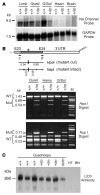
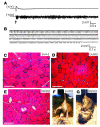
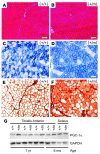

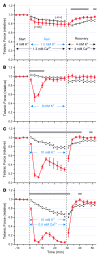
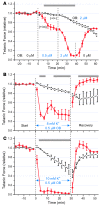
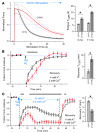
Similar articles
-
Contractile abnormalities of mouse muscles expressing hyperkalemic periodic paralysis mutant NaV1.4 channels do not correlate with Na+ influx or channel content.Physiol Genomics. 2014 Jun 1;46(11):385-97. doi: 10.1152/physiolgenomics.00166.2013. Epub 2014 Apr 8. Physiol Genomics. 2014. PMID: 24714718
-
Na+,K+-pump stimulation improves contractility in isolated muscles of mice with hyperkalemic periodic paralysis.J Gen Physiol. 2011 Jul;138(1):117-30. doi: 10.1085/jgp.201010586. J Gen Physiol. 2011. PMID: 21708955 Free PMC article.
-
Understanding the physiology of the asymptomatic diaphragm of the M1592V hyperkalemic periodic paralysis mouse.J Gen Physiol. 2015 Dec;146(6):509-25. doi: 10.1085/jgp.201511476. J Gen Physiol. 2015. PMID: 26621775 Free PMC article.
-
Genotype-phenotype correlation and therapeutic rationale in hyperkalemic periodic paralysis.Neurotherapeutics. 2007 Apr;4(2):216-24. doi: 10.1016/j.nurt.2007.02.001. Neurotherapeutics. 2007. PMID: 17395131 Review.
-
Spectrum of sodium channel disturbances in the nondystrophic myotonias and periodic paralyses.Kidney Int. 2000 Mar;57(3):772-9. doi: 10.1046/j.1523-1755.2000.00914.x. Kidney Int. 2000. PMID: 10720928 Review.
Cited by
-
New Challenges Resulting From the Loss of Function of Nav1.4 in Neuromuscular Diseases.Front Pharmacol. 2021 Oct 4;12:751095. doi: 10.3389/fphar.2021.751095. eCollection 2021. Front Pharmacol. 2021. PMID: 34671263 Free PMC article. Review.
-
Divalent cation-responsive myotonia and muscle paralysis in skeletal muscle sodium channelopathy.Neuromuscul Disord. 2015 Nov;25(11):908-12. doi: 10.1016/j.nmd.2015.08.007. Epub 2015 Aug 20. Neuromuscul Disord. 2015. PMID: 26494408 Free PMC article.
-
A sodium channel knockin mutant (NaV1.4-R669H) mouse model of hypokalemic periodic paralysis.J Clin Invest. 2011 Oct;121(10):4082-94. doi: 10.1172/JCI57398. Epub 2011 Sep 1. J Clin Invest. 2011. PMID: 21881211 Free PMC article.
-
Targeted deletion of Kcne3 impairs skeletal muscle function in mice.FASEB J. 2017 Jul;31(7):2937-2947. doi: 10.1096/fj.201600965RR. Epub 2017 Mar 29. FASEB J. 2017. PMID: 28356343 Free PMC article.
-
Hypokalaemic periodic paralysis and myotonia in a patient with homozygous mutation p.R1451L in NaV1.4.Sci Rep. 2018 Jun 26;8(1):9714. doi: 10.1038/s41598-018-27822-2. Sci Rep. 2018. PMID: 29946067 Free PMC article.
References
-
- Lehmann-Horn, F., Rudel, R., and Jurkat-Rott, K. 2004. Nondystrophic myotonias and periodic paralyses.Myology . A.G. Engel and C. Franzini-Armstrong, editors. 3rd edition. McGraw-Hill. New York, New York, USA. 1257–1300.
-
- Gamstorp I., Hauge M., Helweglarsen H.F., Mjones H., Sagild U. Adynamia episodica hereditaria: a disease clinically resembling familial periodic paralysis but characterized by increasing serum potassium during the paralytic attacks. Am. J. Med. 1957;23:385–390. doi: 10.1016/0002-9343(57)90318-2. - DOI - PubMed
Publication types
MeSH terms
Substances
Grants and funding
LinkOut - more resources
Full Text Sources
Medical
Molecular Biology Databases

